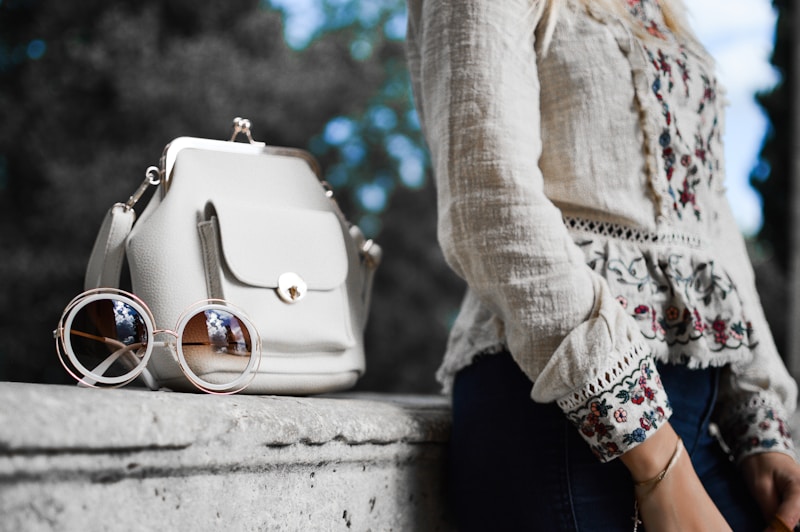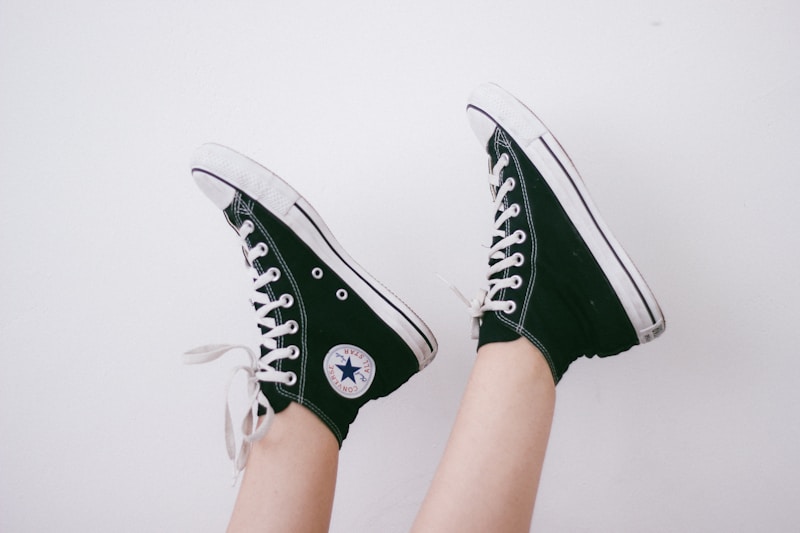9 Questions
What is the capital city of France?
What is the largest planet in our solar system?
What is the smallest country in the world by land area?
What is the highest mountain in Africa?
What is the most spoken language in the world?
What is the largest ocean in the world?
What is the capital city of Australia?
What is the largest desert in the world?
What is the smallest continent in the world?
Summary
Sustainable fashion is a movement aimed at achieving a carbon-neutral fashion industry built on equality, social justice, animal welfare, and ecological integrity. It seeks to reduce the environmental impact of the fast fashion industry, such as air and water pollution and climate change, through the entire process of clothing production, consumption, and disposal. In 2020, voluntary self-directed reform of textile manufacturing supply chains to reduce the environmental impact was largely unsuccessful, and policies for standardized certificates, import controls, subsidies, and interventions are needed. The origin of sustainable fashion movement is linked to the modern environmental movement in the 1960s, and the principles of 'green' or 'eco' fashion are based on the philosophy of deep ecologists, design theorist Victor Papanek, and feminist understanding of human-nature relationships. The early work of Patagonia and ESPRIT continues to shape the conversation around fashion sustainability today. The goal of sustainable fashion is to create flourishing ecosystems and communities through its activity, with environmental, social, and ethical improvements on management's agenda. Green consumerism is geared towards saving money, lowering utility bills, and reducing the harm to the environment. The fast fashion industry produces goods at an unethical level, harming the environment, and exploiting workers, while slow fashion is an alternative approach based on principles of the slow food movement. Slow fashion challenges growth fashion's obsession with mass-production and globalized style, with durable materials, traditional production techniques, or design concepts that are seasonless or will last for more than a season.Understanding Slow Fashion and Its Environmental and Social Implications
-
Slow fashion is an approach to fashion that emphasizes sustainability, durability, and ethical production practices, and it challenges the fast fashion model of producing and consuming clothing.
-
The fast fashion trend has led to a decrease in the lifespan of clothing, with garments being used half as much as 15 years ago, and an estimated $172 million worth of garments being discarded each year, many of them after being worn only once.
-
The fashion industry is the second-largest polluter in the world, after the oil industry, with high water usage, pollution from chemical treatments used in dyeing and preparation, and the disposal of large amounts of unsold clothing through incineration or landfill deposits.
-
Microfibers from synthetic and cellulosic fabrics are polluting the earth's waters through the process of laundering, and eliminating synthetic materials used in clothing products can prevent harmful synthetics and microfibers from ending up in the natural environment.
-
The fashion industry benefits from racial, class, and gender inequalities, and labor rights violations in the fashion industry are a major social issue, with poor working conditions and low wages being major concerns.
-
Supply chain transparency has been a recurring controversy for the fashion industry, especially since the Rana Plaza accident, and Fashion Revolution publishes a Fashion Transparency Index which rates the world's largest brands and retailers according to how much information they disclose about their suppliers, supply chain policies and practices, and social and environmental impact.
-
Fashion companies are criticized for the lack of size, age, physical ability, gender, and racial diversity of models used in photo shoots and catwalks, and a more radical critique of social inequality in fashion concerns the exclusion and aesthetic supremacy inherent and accentuated through fashion.
-
The impact of fashion across the planet is unevenly distributed, with developing countries taking a much higher proportion of the negative impact from the fashion system in terms of waste, pollution, and ecological injustices.
-
As a niche in the market, slow fashion is an approach that is specific for a certain group of people who have the means to slow down and cement their status and position, while those on their way up resent being told to stay at the lower rungs of the status hierarchy.
-
The quality of a product must reflect the appropriate fit into its lifecycle, and certain garments of quality can be repaired and cultivated with emotional durability, but low-quality products that deteriorate rapidly are not as suitable to be "enchanted" with emotional bonds between user and product.
-
The Earth Logic fashion research action plan argues for "putting the health and survival of our planet earth and consequently the future security and health of all species including humans, before industry, business, and economic growth."
-
To combat the issue of fast fashion, longer-lasting materials and products are being promoted to increase sustainability, but slowness comes to mean wardrobes with more lasting products, but the consumption volume and in-flow into the wardrobe/storage stay the same.
-
The current focus is on solutions related to "reduce, reuse, recycle," which are primarily promoted through brand initiatives, but this approach fails to address the uneven global impact of the fashion system, with developing countries taking a much higher proportion of the negative impact from the fashion system.Sustainable Fashion Business Models
-
Circular fashion models are gaining traction, inspired by the circular economy, and aim to encourage sustainable fashion by focusing on the whole life cycle of garments.
-
Biomimicry is a perspective that emphasizes the "Wisdom of Nature," and seeks to make fashion work as a sustainable ecosystem, aligning with natural systems in harmony with the biosphere.
-
Rental and sharing models are gaining popularity and aim to reduce the volume of new purchases and disposal of clothing, which means less waste.
-
Vintage and resale models engage the resale, revival, and recirculation of used, second-hand or vintage clothing.
-
Innovative recycling seeks to view waste itself as a source of value and encourages consumers to participate in the recycling of their clothing.
-
Open-source fashion makes garments more open and adaptable across their lifecycle, allowing consumers to be more engaged in the design, production, and lifetime use of the garment.
-
Novel technologies for virtual try-ons of clothes sold via e-commerce may enable more sustainable fashion and reduce wasted clothes and related transportation and production expenses.
Sustainable Clothing
-
Sustainable clothing refers to fabrics derived from eco-friendly resources, such as sustainably grown fiber crops or recycled materials.
-
Sustainable clothing includes the use of second-hand retail repair and often utilizes upcycling and recycling of clothing.
-
Sustainable clothing has expanded towards reducing the amount of clothing overproduced, incinerated or discarded to landfills, and decreasing the environmental impact of agrochemicals in producing conventional fiber crops (e.g. cotton).
-
Recycled or reclaimed fibers are recovered from either pre or post-consumer sources and can be blended with new fibers.
-
The limited range of recycled materials available reflects the market dominance of cheap virgin fibers and the lack of technological innovation in the recycling industry.Sustainable Fashion and Its Impact: A Comprehensive Summary
-
Clothing can be recycled through mechanical and chemical processes, with chemical recycling producing more predictable quality fibers. Recycled polyester and nylon are the most commonly available synthetic fibers.
-
Donating, consigning, and recycling clothes reduce the amount of clothing sent to landfills. In 2008, the US generated 8.78 million tons of textile waste, with only 1.45 million tons recovered and saved from landfills, resulting in a 17% recovery rate.
-
Upcycling is the process of reusing unwanted or discarded materials, such as fabric scraps or clothes, into new materials or products without compromising their value and quality. It aims to create unique, sustainable, affordable, innovative, and creative products.
-
Sustainable consumption practices for fashion include reducing negative social and environmental impacts throughout the product life cycle, such as materials production and processing, garment manufacturing, retail and marketing, use and maintenance, and discard.
-
Consumer engagement challenges the passive mode of ready-to-wear fashion, promoting active engagement with garments through repair, change, update, swap, and learning from the wardrobe. Consumer engagement aims to promote fashion as an ability rather than primarily as a commodity.
-
Clothing swapping promotes reduction, reuse, and recycling by providing an alternative resource for consumers to save money and time. It reduces transportation emissions and costs and enhances social bonds through online communication or clothing swap parties.
-
Clothing donation to charities provides an opportunity for people to donate clothing to non-profit organizations that are given special tax form and distinct legal status. In America, people donating clothing to charitable organizations are often eligible for tax deductions.
-
Consignment shops sell clothes owned by individuals who consign the items to the shop for the owner to sell. The consignor and the consignee receive portions of the profit made from the item. Consigning clothes to shops can make a profit, unlike donating clothing to charities.
-
Textile recycling firms process about 70% of the donated clothing into industrial items such as rags or cleaning cloths. 20-25% of the second-hand clothing is sold into an international market.
-
Sustainable fashion organizations and companies range from local to global and address particular issues, stakeholders, or the visibility of the sustainable fashion movement.
-
In fashion, the consideration of sustainability of materials is critical. The renewability and source of a fiber, the process of how a raw fiber is turned into a textile, and the impact of preparation and dyeing of the fibers are important factors to consider.
-
Natural fibers can be categorized into two main groups: cellulose or plant fiber and protein or animal fiber. Cotton is a major source of apparel fiber, accounting for over 50% of all clothing produced worldwide. Cotton is one of the most chemical-intensive crops in the world, using approximately 25% of the world's insecticides and more than 10% of the world's pesticides.
-
Bt cotton is a genetically modified cotton plant that is resistant to pest infestations. It does not require insecticide applications, yields 5% more cotton on average, and lowers the price of cotton by 0.8 cents per pound. There are concerns regarding Bt technology, mainly that insects will eventually develop resistance to the Bt strain.
Description
Test your knowledge on sustainable fashion and its impact with our comprehensive quiz. From the principles of slow fashion and circular fashion models to the environmental and social implications of the fast fashion industry, this quiz covers it all. Learn about sustainable clothing materials, innovative recycling methods, and consumer engagement practices that promote sustainable fashion. Take this quiz and see how much you know about the sustainable fashion movement and its efforts to achieve a carbon-neutral fashion industry built on equality, social justice, animal welfare, and ecological integrity.



